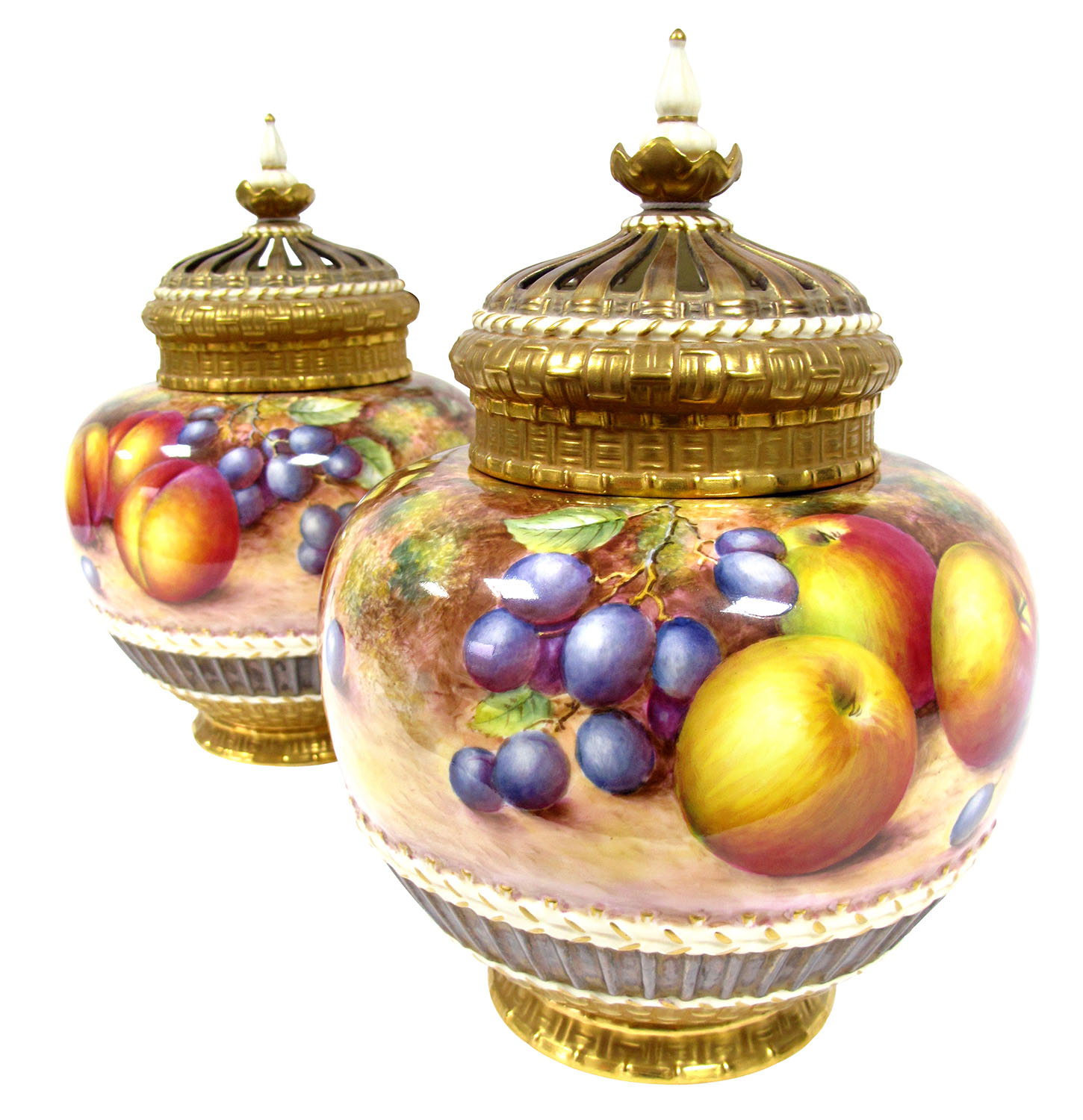Royal Worcester
I was sad to hear recently about the death of Henry Sandon the much-loved Antiques Roadshow expert.
11/01/2024 Blog
I was sad to hear recently about the death of Henry Sandon the much-loved Antiques Roadshow expert. I had the pleasure of working with him on several occasions and remember his great knowledge and enthusiasm for ceramics especially Royal Worcester. He was curator of the Dyson Perrins Museum at the Royal Worcester factory between 1966-1982.
So I thought it would be fitting to tell you about the history of the Royal Worcester factory. As its name suggests Royal Worcester is a porcelain factory located in Worcester and was established in 1751 by a Dr Wall and fourteen partners. It is believed they are second oldest porcelain brand still to be trading.
They opened a showroom in Aldersgate in London just three years later in 1754. Robert Hancock was the first person to apply transfer prints to porcelain and he joined Worcester in 1756 and was a much quicker and inexpensive way of decorating their wares. In 1770 the first Royal dinner service was made for the Duke of Gloucester who was George III’s brother and in 1788 the King himself visited the company and granted them a prestigious Royal Warrant.
Worcester porcelain at this period were mainly blue and white often in the Oriental style to compete against the inexpensive Chinese porcelain that was widely imported into this country. They marked their pieces with either a crescent mark or a square seal always in blue. We often sell examples from this period in our quarterly Fine Art sales and can be brought from as little as £50 up to several thousand pounds.

The formation of Royal Worcester as we know it today was established in 1862. They used several symbols, dots and letters to date each piece which is very useful in cataloguing pieces for our sales. These were first done in a puce colour and the modern pieces now have a black mark.
The most valuable items are those hand painted by the skilful and highly talented artists. So let me tell you about a few. My personal favourite is Charles Baldwyn who specialised in painting swans or doves onto porcelain always on a powder blue ground. He joined the factory at the age of 15 and today his vases can fetch several thousand pounds at auction. Another was the Stinton family who painted cattle and game bird scenes. Apparently, John Stinton found the cow’s feet difficult to paint so they are always depicted in long grass or water hence avoiding painting their feet!
The fruit painted pieces are very popular at auction often with several types of fruit placed against a mossy background within a highly decorative gilt ground. Popular artists to look out for are Harry Austin, John Freeman, Horace Price and William Ricketts. Condition as always is very important with the most sought-after artists bringing the most at auction.
So, if you have any Royal Worcester check out the marks and see if they are signed by the painter we are always here to help and happy to look at your items and give you a free auction estimate.